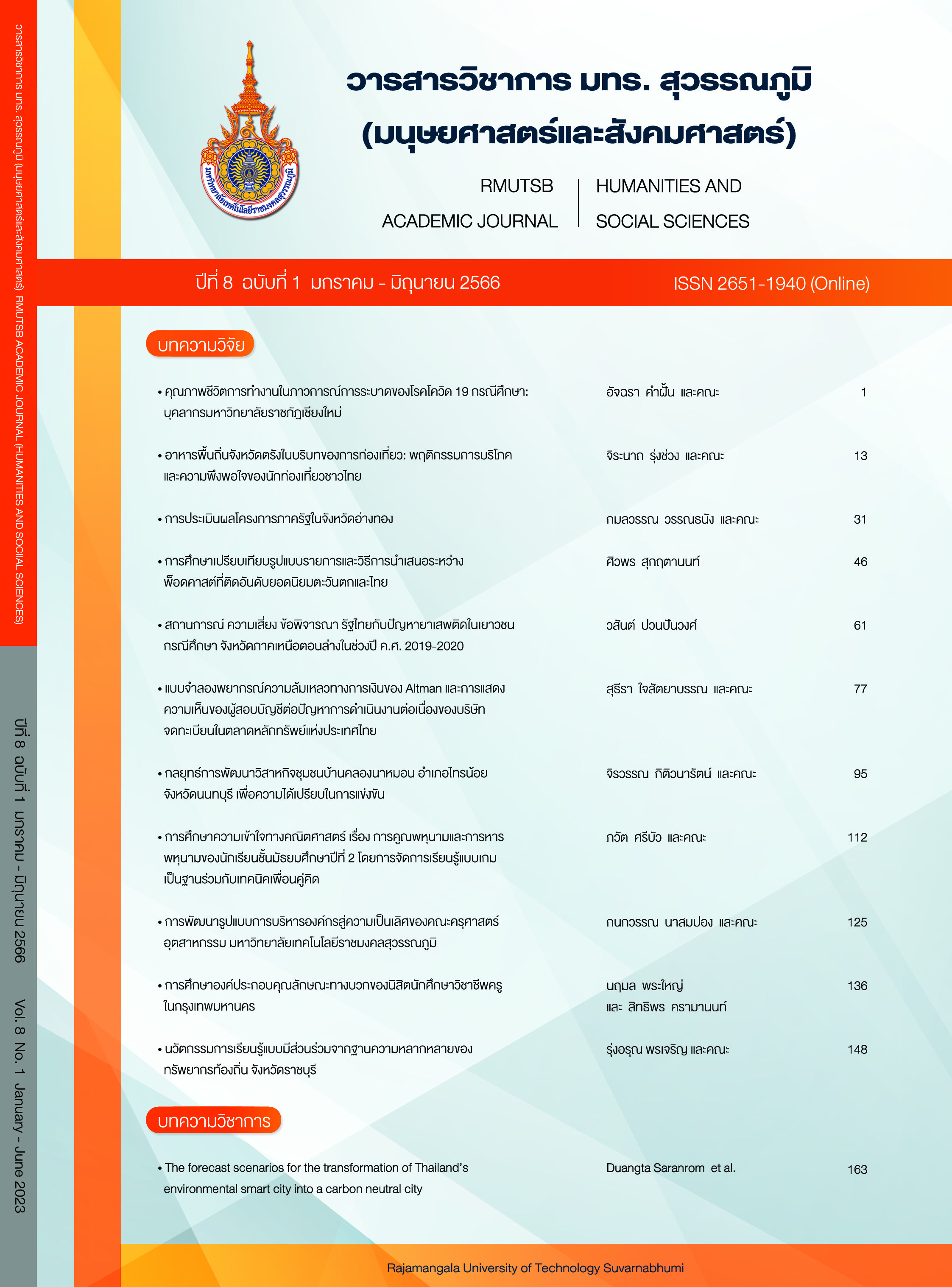Situations, risks, considerations on the Thai state and drug-related youth problems: A case study of the lower northern provinces during 2019-2020
Main Article Content
Abstract
The objectives of this research paper are 1) to study the situation, the trend of problems, and the risks of drug problems in the country during 2019-2020, 2) to study the situation trend of problems and the risks of drug issues in the lower northern region during 2019-2020, and 3) to present the Thai government's consideration of the drug problem, the risk to youth in the lower northern region during 2019-2020. This research is qualitative research. The tool used was the interview. The informants were 18 youths aged 15-18 years old and 18 relevant government officials. The data collection method is divided into 2 parts: 1) collecting documents and related research and 2) collecting field data. Data analysis is a content analysis where all the data obtained are examined together.
The research findings are divided into 3 areas: 1) Drug trafficking and epidemic within the country are more distributed among drug users. The drug trade has changed its form by bringing technology to help in trading through applications such as Line, Twitter, Facebook, IG, etc., while Twitter channel is the most popular channel in drug trading. 2) The risk of drug issues in the lower northern region is also related to drug smuggling routes of the escalating drug problem, leading to arrests in the provinces. The provinces with the highest number of drug-related arrests are Phitsanulok, followed by Phetchabun, Kamphaeng Phet, Nakhon Sawan, Tak, Uttaradit, Sukhothai, Phichit and Uthai Thani respectively. 3) Drug-related problems reflect the structure of problems in all dimensions that lead to youth reaching out, such as community contexts, education problems, family problems, imitating behavioral values, and wanting to try.
Article Details

This work is licensed under a Creative Commons Attribution-NonCommercial-NoDerivatives 4.0 International License.
References
Chantawanich, S. (2011). Data analysis in qualitative research (9th ed.). Bangkok: Chulalongkorn University Press. (in Thai)
Chuakaek, A., & Pholphak, S. (2018). Administration of private sector cooperation of the Narcotics Control the Board Office. EAU Heritage Journal Social Science and Humanities, 8(1), 110-121. (in Thai)
Drug Prevention and Suppression Committee. (2019). Drug prevention, suppression and treatment action plan 2019. Retrieved 17 September 2019, from https://www.oncb.go.th (in Thai)
Interviewee 1. (19 October, 2020). Narcotics control office region 6, Muang District, Phitsanulok Province. (Interview)
Interviewee 2. (19 October, 2020). Narcotics control office region 6, Muang District, Phitsanulok Province. (Interview)
Interviewee 3. (3 November, 2020). Phitsanulok Juvenile Observation and Protection Center, Muang District, Phitsanulok Province. (Interview)
Interviewee 4. (3 November, 2020). Phitsanulok Juvenile Observation and Protection Center, Muang District, Phitsanulok Province. (Interview)
Interviewee 5. (3 November, 2020). Phitsanulok Juvenile Observation and Protection Center, Muang District, Phitsanulok Province. (Interview)
Macmillan, T. T. (1971). The Delphi technique. Paper Presented at the annual meeting of the California Junior Colleges Associations Committee on Research and Development. Monterey, California.
Office of the Narcotics Control Board, Tak Province. (2020). Minutes of the NCMC meeting, Tak Province, July 20. Retrieved 1 September 2020, from http://123.242.165.136/?module=file&pages=list_file_other&cate_file_id=23. (in Thai)
Office of the Narcotics Control Board, Ministry of Justice. (2015). Strategic plans for drug prevention and solution 2015-2019. Retrieved 27 September 2019, from http://www.lampang.go.th. (in Thai)
Office of the Inspector. (2020). Monitoring integration of projects to drive important policy issues on drug problems according to the Inspector General's integrated civil inspection plan. Retrieved 3 February 2023, from https://pmi.opm.go.th/inspect_main/uploadfiles/_รายงานยาเสพติด.pdf (in Thai)
Pounpunwong, W. (2021). The participation in prevention, risk mitigation and resolving drug-related youth problems of the state, society and community in municipal communities in the lower northern region. Journal of Legal Entity Management and Local Innovation, 7(11), 181-198. (in Thai)
Puranapanya, N. (2015). Factors affecting drug offenses of children and youth in Buriram Province. Retrieved 14 November 2019, from https://www.rsu.ac.th/cja/IS/08-NITCHATORN_PURANAPANYA-2558.pdf. (in Thai)
Siriwipherk, N., & Lertprasopsuk, N. (2018). The behavior of people in drug prevention in Talad Krathum Baen, Krathum Baen, Samut Sakhon Province. Silpakorn Educational Research Journal, 10(1), 367-378. (in Thai)
Tanphaew, O., Pengchai, J., & Praiwan, Y. (2019). The development of guidelines for the prevention and solution of drug problems in Educational Institutions Under The Secondary Educational Service Area Office 24. Graduate Studies Journal, 16(72), 33-47. (in Thai)
Tantivechayanon, P., Naressenie, K., & Pairindra, B. (2016). The success of the drug prevention and suppression policyin the upper northeastern provinces. Silpakorn University Journal, 36(3), 91-113. (in Thai)
Thai Encyclopedia Project for Youth. (2016). Causes of drug addiction among youth. Retrieved 14 November 2019, from http://kanchanapisek.or.th/kp6/sub/book/book.php?book=9&chap=13&page=t9-13-infodetail02.html. (in Thai)
Wellington, J. (2000). Education research: Contemporary issues and practical approaches. London: Continuum.
Yuenharn, S. (2019). The current drug situations and 20-year action plans for drug prevention and solution. Retrieved 29 September 2019, from https://bdn.go.th/attachment/services/download.php?WP=q3MZp21CM5O0hJatrTgjWz00qmqZZz1CM5O0hJatrTDo7o3Q. (in Thai)


